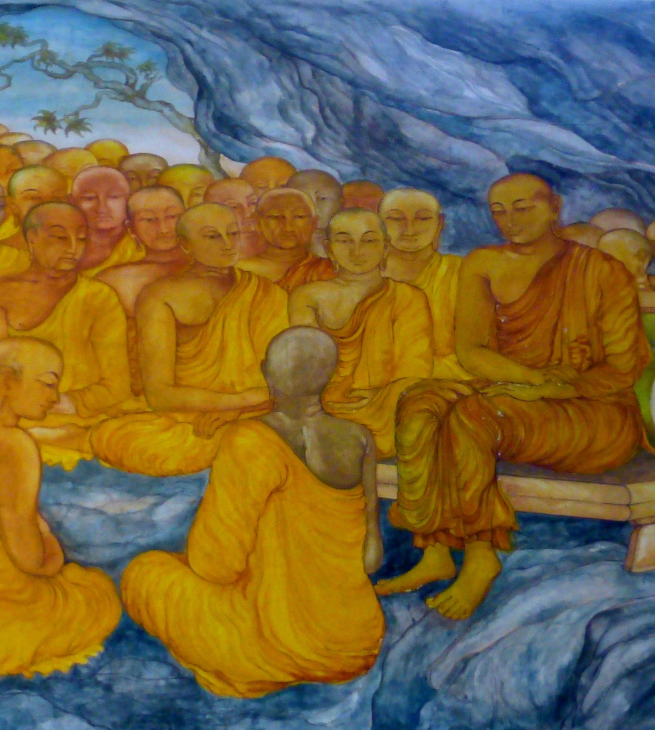Sinhalese Manuscripts Digitisation Project


First Buddhist Council at Rajagaha, at the Nava Jetavana, the current Rajgir (around the 5th century BC).
Background
In the servings mentioned above of Buddhist councils, the collective ”Buddha-dhamma” was divided into three sections or ”Pitaka”: the Sutra Piṭaka (Buddha’s sermons and dialogues), the Vinaya Piṭaka (Disciplinary rules for the monastic community), and the Abhidhamma Piṭaka (The higher doctrine) and were recited in their entirety. The three Piṭakas collectively form the Tripiṭaka. The Mahā-Arahants disciples who had expertise in each respective discipline and had the highest aptitude in retentive memory were given the responsibility of ensuring its preservation and the epithet of ”Dhamma bhāṇaka”.
How did Our Great Ancestors Preserve this Heritage for Future Generations?
During successive invasions by the Maghas in the 13th century and the colonisation that followed, under the Portuguese, the Dutch, and finally the British, a great repository of Buddhist literature written in palm-leaf manuscripts housed in Sri Lanka dispersed and evanesced as they were requisitioned and moved to Europe.
About the project
In order to ensure the continued preservation of all possible surviving manuscripts housed across the world, it has become imperative to obtain their digital copies and compile an easily accessible collection or anthology. Most of the manuscripts in question are over 150 years old and as such, in extremely fragile conditions, which makes them unsuitable for physical public reference in the first place. These factors have formed a compelling call for obtaining digital copies/scans of the manuscripts, which shapes the first part of this research’s motivation.
Secondly, all most all these manuscripts are written in ancient Sinhalese script, which requires to be translated to modern Sinhala and English, if these master pieces are to contribute to any ongoing contemporary theological, cultural or historical research and studies.
What We have Achieved so far
Through a generous donation from our supporters, we were able to complete the pilot project’s manuscript conservation and imaging, catalogue creation and online presentation in June 2021. The outputs of this project are four detailed and searchable catalogue records and fully digitised manuscripts made freely available here.
Resources & Publications
බි්රතාන්ය පුස්තකාලයේ ශ්රී ලාංකික පුස්කොළ පොත් අන්තර්ජාලයට
බි්රතාන්ය පුස්තකාලය විසින් බි්රතාන්ය පුස්තකාලයේ සහ ඉන්දියානු කාර්යාල එකතුවේ එක් අංශයක් වන හියු නෙවිල් අත්පිටපත් එකතුවේ අන්තර්ගත වන ශ්රී ලාංකික පුස්කොළ පොත් (අත්පිටපත්) හතරක් ඩිජිටල්කරණය කර ඇත.
Read Article
Sinhalese Palm Leaf Manuscripts Digitisation
The John Rylands Research Institute and Library, Paramaththa and the International Centre for Theravada Buddhism UK (ICTB UK) have digitised thirty-two Sinhalese Manuscripts and made them freely available online.
Watch Video
Sinhalese Manuscripts Digitisation Project Web Launch
The British Library has digitised four Sinhalese palm leaf manuscripts, part of the Hugh Nevill manuscript collections, from the British Museum Library and India Office collections, which make up the significant Sinhalese manuscript collections held at the British Library.
Watch Video
How to Contribute
Generous supporters like you are the key to accomplishing this noble mission. Donations can be made on a one time or monthly basis to the International Centre for Theravada Buddhism UK (ICTBUK) using the details provided below.